The State of the Beer World
A Global Look at Leading and Emerging Brewing Countries
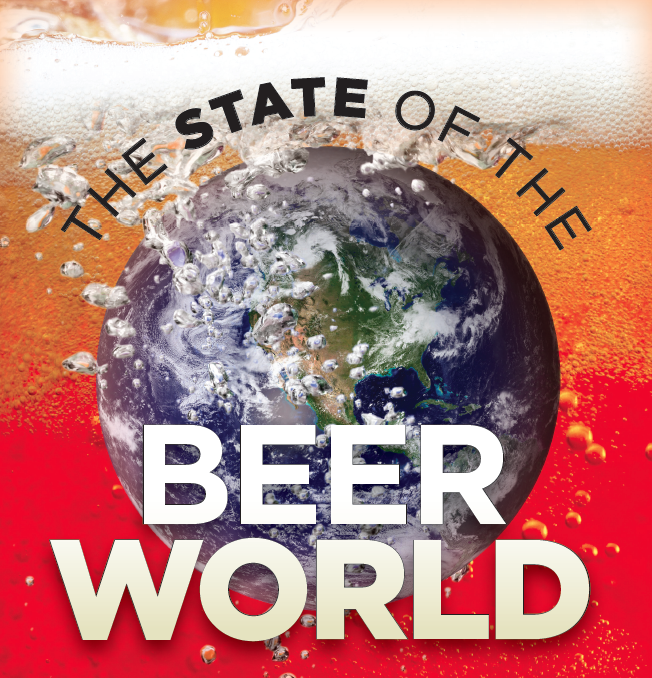 The beer being sampled would by almost any definition be deemed unusual. That it was brewed from a mix of grains that included four different types of wheat—malted, unmalted, flaked and smoked—comprising over half the grain bill, and boasted an impressive 12% alcohol by volume, was alone an element of distinction. That its ingredients also included apricots, dates, coriander, orange peel and, for the sheer hell of it, a few handfuls of oak chips only added to its intrigue. And then there was the two years of aging it had already received in the brewery’s cellar.
The beer being sampled would by almost any definition be deemed unusual. That it was brewed from a mix of grains that included four different types of wheat—malted, unmalted, flaked and smoked—comprising over half the grain bill, and boasted an impressive 12% alcohol by volume, was alone an element of distinction. That its ingredients also included apricots, dates, coriander, orange peel and, for the sheer hell of it, a few handfuls of oak chips only added to its intrigue. And then there was the two years of aging it had already received in the brewery’s cellar.
But this being the age of wild and wacky brewers and “extreme” beers of all sorts, even such an extraordinary ale is merely another day in the life of American brewing, right?
Except that this beer wasn’t brewed in the U.S., or Canada or Scandinavia or Italy or anywhere else where radical brewing has taken hold. It was produced in Brazil, in Curitiba, a city virtually unknown outside South America before its hosting of several World Cup games during the summer of 2014. And in addition to being unusual, it was also very, very good.
And that is where our story begins.
Taking Stock
Plotting the realities of beer during the mid-teens of the 21st century is a complex task, made all the more confounding by the different speeds and degrees at which markets are shifting around the globe. There is, however, a pair of parallel yet inversely proportional truths that make the job a little easier.
At one end of the market, the big one, sales of the world’s largest and best-known beer brands are shrinking slowly in more countries than not, making way for beers of the newer persuasions. Principally, this is happening in the western half of the northern hemisphere and Australasia, although there are indications that parts of Asia may yet follow suit.
Average per-capita beer consumption is falling, too, although the beer sector overall is not yet losing out because consumption continues to rise in a small handful of very large countries, allowing brewers of every shape and size to weave a good story from the numbers. To which end the world’s largest brewing companies have uniformly shifted their gaze to places like Russia, Brazil and especially China, where consumption may rise and fall year to year, but is nonetheless in an overall growth pattern.
On the smaller side of the brewing ledger, the story is significantly different in terms of both sales and geography. Where in 2011 there were roughly 40 nations with active small-beer cultures, and maybe a dozen more with a local brewery or two, the numbers today read around 60 and 15 respectively. For the most obvious progress, look to Latin America and Eastern Europe, with Southeast Asia and sub-Saharan Africa bubbling under. Most recently even Mauritius, Bhutan and San Marino have joined a clan that may ultimately include just about every non-Islamic state on the planet.
In countries where brewing is already firmly established, it is uniformly thriving. While the most obvious example of this is in the United States, cases can be made that success is even stronger in Canada, where the brewery to population ratio is roughly 1 to 110,000, the United Kingdom at 1 to 55,500, or even Switzerland, where tricky licensing laws place the brewery count at somewhere between 265 and 465, depending on how you define a commercial brewery, for a rather astounding brewery to people ratio of at least 1 to 30,000.
Better quality beer, having furiously defied the global economic downturn, seems also to be surviving the emerging recovery, which is a curious but promising thing. What is harder to do is map within this maelstrom of positivity what underlying patterns have been forming.
So What Are People Drinking, Anyway?
Look around the world and what you see amid the chaos is beer advancing in a triangular formation.
At one point of this triangle are what might be termed classic beers, those styles that have stood the test of time to become instantly recognizable in format and relatively easy to identify by flavor or even aroma. These are beers with long and storied pedigrees, and usually no fewer than three or four breweries that have been making them for a century or more, such as pale ales and IPAs, porters and stouts, abbey-style dubbels and tripels, hefeweizens and pilsners.
At the second point sit what might be termed folk beers, brews with a clear provenance associated with a singular beer culture. Usually best appreciated in their regions of origin, these styles inflame the passions of brewers and cause writers to wax rhapsodic in their praise, including Belgian lambics, Finnish sahtis, the kaimiškas of Lithuania and perhaps even Britain’s cask-conditioned bitters and milds, alongside revivalist specialties like Leipziger gose and Polish grätzer.
At the spiky third point are so-called extreme beers, those created—for better or ill—via the addition of ludicrous quantities of hops, the use of unusual adjuncts and additives, the application of unconventional or old-style conditioning, or sometimes just more of everything except water. The motivation is often simply to see what happens if the art of the possible is stretched toward its technical limit, though the chance that a new classic might emerge from the morass will not be scorned. These are mostly new-breed brews, although arguments could be mounted in favor of the precept that imperial Russian stout, eisbock and barley wine were all the “extreme beers” of their time.
Few beers balance on any one point of this triangle, far more sitting somewhere along or inside the lines between them. Covering the space between classic and folk, for instance, are Kölsch, altbier, Irish-style dry stout and perhaps saison, among others. For folk-to-extreme brews, think oude gueuze and oude kriek, the oak-aged brown ales of Flanders and newer concoctions like the rice saisons of Japan. For classic-to-extreme, consider the vast array of recent wild, sour, triple, quadruple and Imperial doo-dahs.
The European Dimension
In the last three years the European nation that has seen the biggest improvement is probably the Netherlands. Dominated by Heineken and formerly reliant on Belgian imports for “special” beers, local brewing was galvanized by the arrival of De Molen in 2004, bringing imagination, confidence and high technical quality to a scene populated by enthusiastic amateurs. Currently, breweries are opening at the rate of about one a week, many making high-quality beers.
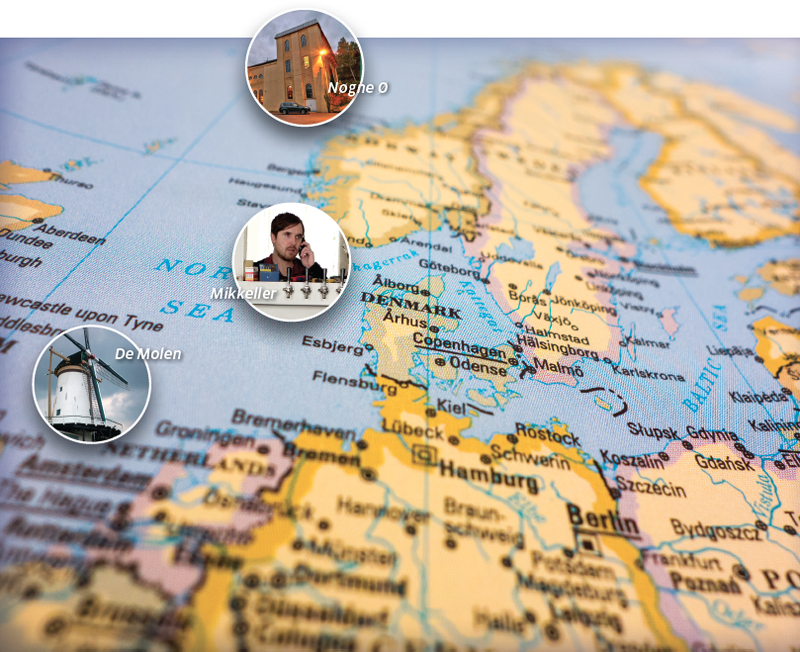 This nation of traders has already started promoting its wares in the international market, making the brewers of Denmark—save, of course, for the globe-trotting brothers Bjergsø, Mikkel and Jeppe—look unbelievably slow. The fabulous array of specialist stout and pale ale Denmark now boasts makes the nation Europe’s best-known secret.
This nation of traders has already started promoting its wares in the international market, making the brewers of Denmark—save, of course, for the globe-trotting brothers Bjergsø, Mikkel and Jeppe—look unbelievably slow. The fabulous array of specialist stout and pale ale Denmark now boasts makes the nation Europe’s best-known secret.
Scandinavian neighbor Norway, meanwhile, waits to see what effect the acquisition of superstar Nøgne Ø by the country’s largest independent, Hansa Borg, will have. Extortionate alcohol tax makes life difficult for brewers here, as in Sweden, Finland and Iceland, although each has a nationwide government-owned monopoly of alcohol stores to offer some silent protection.
France, is also seeing nationwide expansion, with a new wave of over 600 brew houses being spread almost evenly across its 96 mainland départements. While the smallest are garden-shed affairs selling murky light ales to a few village shops, there are also shiny, purpose-built mini-complexes already firing splatters of international styles at increasingly inquisitive and knowledgeable local audiences. Many will falter, but expect some to be good enough to join the international elite.
While nowhere in Europe is beer retreating, progress is slowest in the best-established beer cultures. Belgium is awash with companies that call themselves breweries but do not brew beer, and as established brewers shore up older markets and seek new ones for well-worn classic ales and old-style lambics, hotter new arrivals like Dilewyns are vastly outnumbered by hobby brewers making kit beers who need much more practice.
In the U.K., most of the country’s 1,100 or more breweries persist in their reliance on cask-conditioned light ales, while the remainder, over 100 self-styled craft brewers plus a few switched-on older companies, are embracing new approaches, new styles and even kegged beer, much to the dismay of CAMRA oldsters. Across the channel in Ireland, where independent brewing disappeared in the 1970s, the 70 breweries promised by the end of 2015 are offering a growing mix of tropically hopped pale ales and revivalist versions of classic porters and stouts, and anxiously waiting to see which takes the stronger hold.
In the traditional European beer powerhouse of Germany, long-established family breweries in the south remain in decline, even as the country’s overall brewery count has returned to growth. While the 70 percent of the nation’s beer that can be correctly defined as blond lager includes such commendable sub-categories as märzen and landbier, spezial and the occasional mind-blowing helles, the emphasis the country’s largest and most internationally prominent breweries are placing on increasingly anemic pilsners seems to us destined to fuel an overall decline in the indigenous beer culture.
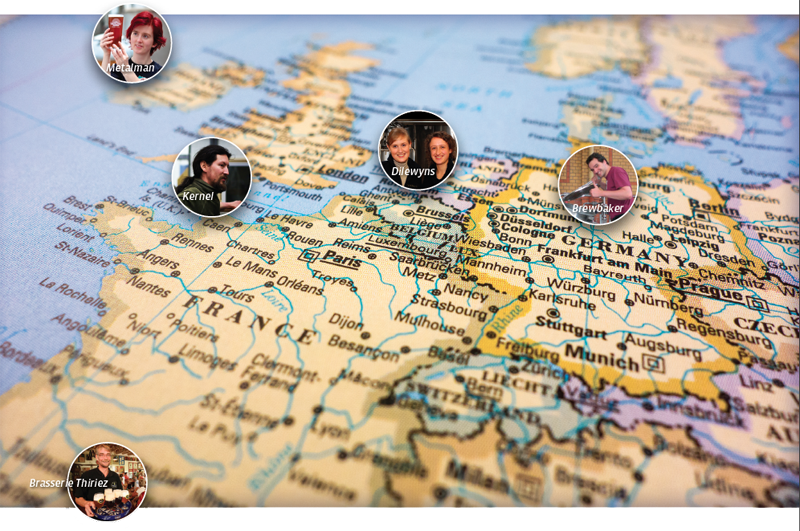 Over the border in Austria, traditionally a bastion of conservatism, new beer tends to be built on making local specialties better while welcoming new ventures, like Trappist Stift Engelszell. Equally Alpine and conservative Switzerland, with German, French and Italian influences, is using local laws governing brewery licenses to seed a plethora of breweries so small as to not even rate the “nano” designation, many of which will no doubt fall by the wayside while others grow and thrive.
Over the border in Austria, traditionally a bastion of conservatism, new beer tends to be built on making local specialties better while welcoming new ventures, like Trappist Stift Engelszell. Equally Alpine and conservative Switzerland, with German, French and Italian influences, is using local laws governing brewery licenses to seed a plethora of breweries so small as to not even rate the “nano” designation, many of which will no doubt fall by the wayside while others grow and thrive.
The pre-revolutionary dominance of beers from the Czech Republic in Eastern Europe diminished after the Russians left, in part because attempts to industrialize brewing there were badly misjudged. However, clusters of craft ale producers and, encouragingly, proper Bohemian lager breweries such as Kout na Šumavē and Únētice are emerging.
Meanwhile, Poland continues to go at new beer like a road gang carving out highways, some finished, some little more than intended, and Hungary is seeing a dynamic similar to that in other wine-oriented countries, with the annual Főzdefeszt beer festival in Budapest starting to attract notice. As to the rest, much remains to be seen.
It is a matter of opinion whether the nations that make up the western Pacific rim, from Japan in the north via Southeast Asia to Australia and New Zealand in the south, should be seen as a single beer market or not. Perhaps a little time is required to let the ownership and trade rules settle.
Having fizzed onto the craft beer map in the late 1990s, the small brewery segment in Japan is now stabilizing at about 250 businesses. Large brewpubs and small local jibiiru breweries appear in a ratio of roughly 3 to 2, with the latter more often making the interesting or daring beers, exotic fruit beers and regular beers made with rice in the grain bill being the main local variants appearing alongside traditional German and new American styles.
Elsewhere in Asia, progress is slow but steady. Great things are soon expected from South Korea, where laws aimed at maximizing sustainable development, which also made the creation of new breweries difficult to the point of almost impossible, have recently been withdrawn. In Vietnam, the absence of good data may be hiding the disappearance of rickety-rackety old light-beer plants as commercial blond lagers expand. For reasons related to the timings of their respective revolutions, the growing rash of brewpubs here tend to be Czech-influenced, whereas in neighboring Thailand and in Taiwan they are German.
At the English-speaking southern end of the Pacific, Australia is enjoying a huge increase in the popularity, range, inventiveness and quality of its still-ice-cold beers, with Galaxy hops becoming a national mascot for Australian craft brewing. Over 300 companies now term themselves breweries, though likely 20 percent of these are simply contract brewers and perhaps as many as 10 percent produce mainly for others rather than promoting their own ranges.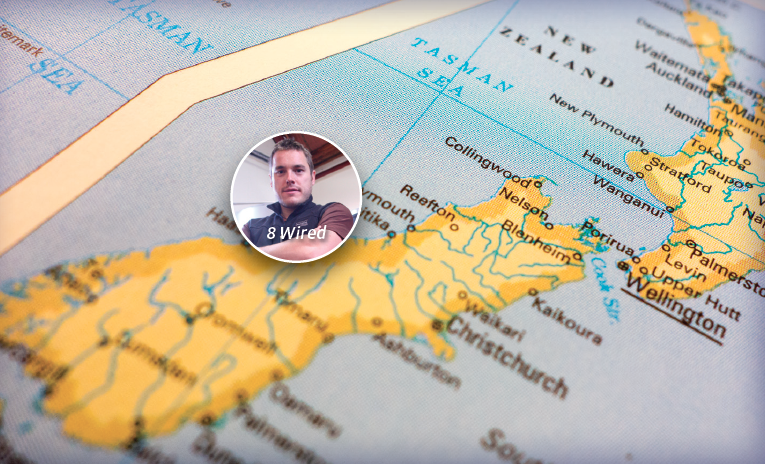
In New Zealand, hop growers march lock-step with brewers in forging a national beer identity, one which finds expression in some pretty sophisticated Kiwi variations on IPA, pale ale and pilsner from companies like Tuatara, 8 Wired and Kirin’s recent purchase, Emerson’s Brewing. With numbers of beers and breweries that are roughly half those of Oz, but with only 20 percent of the population, contract brewing here is a practical necessity for both purchaser and supplier.
Veering back westward, rumblings are beginning to emerge from the parts of India where small-scale brewing has been legalized, although it would be a brave beer writer who would even hazard a guess at how many small breweries are currently in development there. And the only part of Africa to have any semblance of a good beer movement, South Africa, is emerging from its own form of brewing Dark Ages, having over the course of a mere decade moved from a virtual monopoly situation to a state that now boasts at least 40 breweries and works in progress.
Meanwhile, Back in North America
No one who follows beer in these pages should need reminding of everything that is afoot in the United States, of the remarkable growth figures—18 percent growth in the first half of 2014, in excess of 3,000 breweries, etc.—and the surging interest in all things beer. And while the identities of leading beer states such as California, Oregon, Colorado and Michigan will no doubt be equally apparent to most, less obvious, perhaps, are the identities of the next crop of up-and-comers.
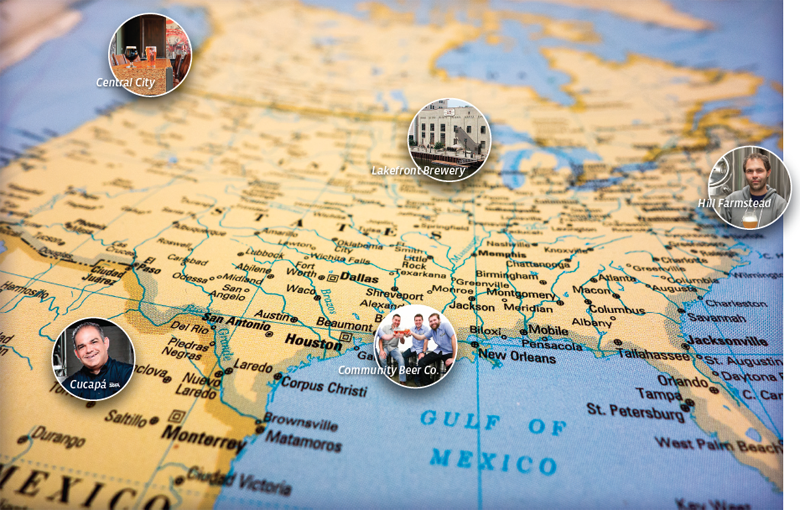 One such state is Wisconsin, with close to 100 breweries at the time of writing, a historic passion for all things beer and brewing and such operations as the firmly established but expanding Lakefront Brewery, fast-growing Titletown Brewing and up-and-comer O’so Brewing, among others. Also rising fast is the Dallas area, spurred by a rapidly expanding circuit of beer bars and new breweries like the Community Beer Co. and strong ale specialist Peticolas Brewing.
One such state is Wisconsin, with close to 100 breweries at the time of writing, a historic passion for all things beer and brewing and such operations as the firmly established but expanding Lakefront Brewery, fast-growing Titletown Brewing and up-and-comer O’so Brewing, among others. Also rising fast is the Dallas area, spurred by a rapidly expanding circuit of beer bars and new breweries like the Community Beer Co. and strong ale specialist Peticolas Brewing.
Others to watch include Vermont, where the notable success of Alchemist and Hill Farmstead is inspiring a host of others; coastal Maine from Portland south to the New Hampshire border; Washington, DC, with one new brewery opening after another; and Oklahoma, where Prairie Artisan Ales may yet prove to be the tip of a substantial iceberg.
And then there is Canada
While French Canadian breweries are justly becoming more and more familiar to eastern U.S. beer drinkers, even with such quirky and difficult-to-pronounce names as Dieu du Ciel (“God in Heaven”) and Trou du Diable (“The Devil’s Hole”), much is happening in Canada even beyond the Québec border.
After years of slow growth and solid traditionalism, southern Ontario has finally broken free of its conservative approach to brewing and embraced everything from U.S.-inspired hopping rates to barrel conditioning and souring, increasingly for the good, thanks to operations like Great Lakes Brewing, Amsterdam and Bellwoods, but still frequently with middling success. Out west, the British Columbia lower mainland leads the charge, with provincial capital Victoria right behind or even alongside, thanks to breweries like Central City and Howe Sound clustered on either side of the city of Vancouver and Driftwood and Phillips on Vancouver Island.
The remainder of Canada is a start-and-stop success story, with standout breweries scattered here and there—Alley Kat in Edmonton, Garrison in Halifax, Half Pints in Winnipeg—but only patches of overall momentum building, most notably in southern Alberta and Nova Scotia.
Latin American Dreaming
One might grow very old waiting for something significant to happen to Caribbean beer, but not so in Mexico or Central America. While the country’s northwest is certainly leading the charge of cervezas artesanales Mexicanas, helmed by border breweries like Insurgente and Cucapá, the rest of the nation is not far behind. Notably, Mexico City and environs are home to a growing number of small-scale operations, some of which, like Cerveceria Calavera and Primus with its Tempus line, have even defied the almost cartel-like brewing oligopoly of Anheuser-Busch InBev-owned Modelo and Heineken-owned FEMSA Cerveza to gain shelf space in supermarkets and places at the tables of starred restaurants in the capital.
Farther south, Costa Rica is home to Central America’s most successful craft brewery, called, appropriately, Costa Rica’s Craft Brewing Co., while neighboring Honduras boasts a handful of brewpubs catering mostly to travelers rather than locals, Panama has enough small start-ups to host an annual Micro Brew Fest, and El Salvador is showing signs of newfound interest in beer beyond the ubiquitous and bland tropical blond lager.
The situation in most of South America is similar to that in Mexico, with two or three companies controlling the market to a degree that makes the MillerCoors-Anheuser-Busch Inbev duopoly seem open-market. Still, cracks have opened, and Latin America’s new small-scale brewers are rushing to fill them.
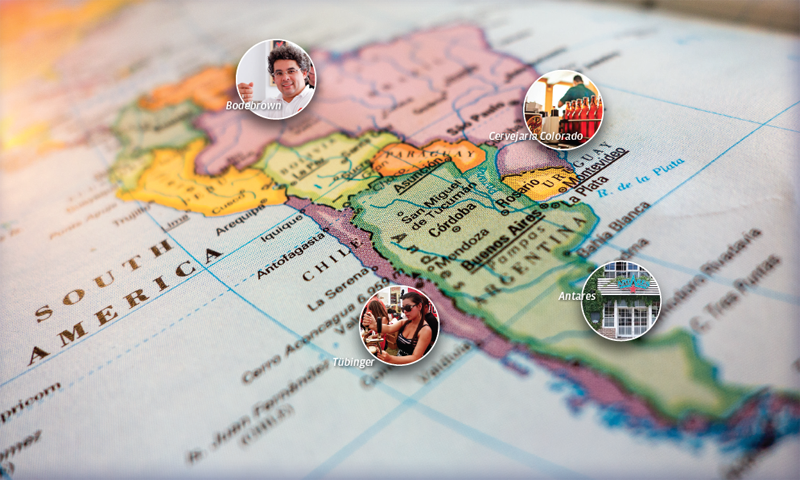 Argentina’s nascent craft beer scene is unusual in that it is strongest not in the major urban regions, but in and around the winery district of Mendoza, perhaps in response to the tourist traffic seen there or, as in parts of Italy, as a logical extension of one drinks industry into another. Chile, on the other side of the Andes, responds in kind with its own, smaller craft beer scene, featuring Santiago as its urban hub.
Argentina’s nascent craft beer scene is unusual in that it is strongest not in the major urban regions, but in and around the winery district of Mendoza, perhaps in response to the tourist traffic seen there or, as in parts of Italy, as a logical extension of one drinks industry into another. Chile, on the other side of the Andes, responds in kind with its own, smaller craft beer scene, featuring Santiago as its urban hub.
Far and away the Latin American leader, however, is Brazil, with well over 200 breweries—possibly many more, since even the most beer-knowledgeable Brazilians are vague on precise numbers. Pioneers include Ribeirão Preto’s Cervejaria Colorado, named after the state in which the owner bought his brew kit, and now Kirin-owned Eisenbahn, based in Blumenau at the south end of the country.
But it is in locales like Curitiba, the province of Minas Gerais and the beer bars of São Paulo and Rio de Janeiro that the future of Brazilian beer likely resides, with developing brewing communities and avid enthusiasm for beers that are not ice-cold, almost water-pale and virtually devoid of flavor. Add to that the growing interest among brewers in the indigenous ingredients of Brazil, from Amazonian fruits to exotic woods, and you have the basis of yet another exciting beer culture.
And So, About That Beer
All of which brings us back to the beer mentioned at the outset, 4 Blés by Cervejaria Bodebrown, in case you were wondering, and thousands of remarkable beers utterly different from, but still somehow similar to it.
For as in Curitiba, or Rome or Calgary or Seoul or St. Petersburg or Tucson, good beer is today found far and wide, perhaps not in equal abundance in all places but almost certainly of comparable interest and laudable character.
In this new world, Belgium is no longer the promised land of ale, Munich is not the hub of all things lagered and, despite what Michael Jackson once said, the United States is no longer the most exciting place in the world for beer. Today, that promised land or hub or most exciting place could be almost anywhere you care to look, so long as you’re prepared to look hard enough.
Stephen Beaumont & Tim Webb
Stephen Beaumont and Tim Webb are veteran beer writers with over 60 years of experience between them. They are the authors of both The Pocket Beer Guide 2015 (Firefly Books, 2014) and The World Atlas of Beer (Sterling Epicure, 2012).


The way you place the pictures of Bodebrown and Colorado looks weird for us since Bodebrown is in the South right about where you put the picture from Colorado. Not a big deal just looks strange geographically.
Fascinating look at the world beer scene, thanks!
(n.b. We’re at 110 microbreweries and counting in South Africa now :-D)
Hi Tim, Glad you enjoyed your visit to the 1st Micropub, Sorry I missed you, Away in Nottingham at CAMRA’S AGM collecting an Award
Martyn
What, no mention of Pennsylvania!